During Bernanke’s press conference last week, he was asked the following question:
Q: Greg Ip of The Economist. First, assume that you were not constrained by the zero nominal bound right now. What would the federal funds rate be, even if it were a negative number? And do you believe that you are at an equivalent degree of monetary accommodation today using your unconventional tools?
MR. BERNANKE: Well, the exact — the exact reading for the federal funds rate today, in the absence of the zero lower bound, would depend a lot on which particular rule, what particular model that you use. I don’t want to cite a particular number, but it probably would be negative. And in that respect, we are trying to compensate for that by the use of nonstandard tools, including, as you know, almost a $3 trillion balance sheet. We — we see monetary policy as being approximately in the right place at this point, based on the analysis that we’ve been going of the economy and the outlook. That doesn’t mean we might not take further action. We are certainly prepared to take further action. But for the time being, it appears that we are more or less in the right place.
The San Francisco Federal Reserve Version Of The Taylor Rule Disagrees With Bernanke
Bernanke is correct that it matters which model one uses. One popular version of this rule was published in June 2011 by the San Francisco Federal Reserve:
The Taylor rule is a policy guideline that generates recommendations for a monetary authority’s interest rate response to the paths of inflation and economic activity (Taylor 1993). According to one version of this rule, policy interest rates should respond to deviations of inflation from its target and unemployment from its natural rate (Rudebusch 2010). A simple version of this rule is:
Target rate = 1 + 1.5 x Inflation – 1 x Unemployment gap
The target rate recommended by the rule is a function of the inflation rate and the unemployment gap. That gap is defined as the difference between the measured unemployment rate and the natural rate, that is, the unemployment rate that would cause inflation neither to decelerate nor accelerate. The literature shows that this simple rule or close variations approximate fairly well the policy performance of several major central banks in recent years (see Taylor 1993 and Peersman and Smets 1999).
The Federal Reserve also tells us their preferred inflation measure is now the headline year-over-year (YoY) change in PCE. Using this measure, their preferred target is 2.0% (new as of January).
Additionally, the Federal Reserve’s latest Central Tendency tells is the natural unemployment rate is 5.6% (mid-point of central tendency of 5.2% to 6.0%).
Here is the raw data used in the Taylor Rule:
Latest YoY PCE is 2.10%
Latest YoY core PCE is 2.00%
Latest unemployment rate is 8.2%
From which we get the following inputs:
PCE Inflation = 1.5 X 2.10% = 3.15%
Core PCE Inflation = 1.5 X 2.00% = 3.00%
Unemployment gap = 8.2% – 5.6% = 2.6%
Lower Central Tendency (CT) unemployment gap = 8.2% – 5.2% = 3.0%
We can apply these inputs to the San Francisco Federal Reserve’s Taylor Rule equation and get the following results for March 2012 (latest data):
Using YoY PCE:
Target = 1% + 3.15% (PCE inflation) – 2.6% (unemployment gap) = +1.55%
Using YoY Core PCE:
Target = 1% + 3.00% (Core PCE inflation) – 2.6% (unemployment gap) = +1.40%
Using YoY Core PCE and a natural unemployment rate of 5.2% (lower end of the central tendency):
Target = 1% + 3.0% (Core PCE inflation) – 3.0% (lower CT unemployment gap) = +1.0%
Below are charts of the Taylor Rule’s implied funds rate (red line,top panel), the actual funds rate (blue line, top panel) and the difference between the two (green line, bottom panel). The top chart uses headline PCE and the bottom chart uses core PCE.
Click to enlarge:
˜˜˜
Although many different iterations of the Taylor Rule exist, including John Taylor’s latest version, the results above are consistent with most other Taylor Rule estimates in targeting a positive funds rate. This is also consistent with Howard Simon’s March Connections which estimated a positive targeted funds rate. This leaves us puzzled as to why Bernanke asserts the funds rate is correct to be below zero.
A Lot Can Change In A Year
In June 2011, when the San Francisco Federal Reserve wrote the Economic Letter mentioned above, the Taylor Rule did estimate a negative funds rate as being neutral. But now that the inflation rate is higher (first chart below) and the unemployment rate lower (second chart below), the current target according to the Taylor Rule has turned higher.
˜˜˜
Bernanke seemingly gets around this by suggesting inflation is temporary, meaning he believes the true rate is lower than reported. He also critiques Okun’s Law, suggesting the true unemployment rate is higher than reported. Bernanke’s asserts the recent decline in the unemployment rate is “catch-up” for previous layoffs and not the start of a new major hiring wave.
Without an equation from Bernanke, we have no way of knowing how much these factors affect his personal Taylor Rule measurements or how he can assert the neutral rate is probably negative.
How Much Does “Additional Accommodation” Lower The Neutral Funds Rate?
Regarding how much unconventional policy (i.e., QE) matters, in testimony in February 2011, Bernanke said:
MR. BERNANKE: We tried to make an assessment of — we asked the hypothetical question: If we could lower the federal funds rate, how much would we lower it? And a powerful monetary policy action in normal times would be about a 75-basis-point cut in the federal funds rate. We estimate that the impact on the whole structure of interest rates from 600 billion (dollars) is roughly equivalent to a 75-basis- point cut. So on that criterion, it seemed that that was about enough to be a significant boost, but not one that was excessive.
In October 2010 Bill Dudley answered a very similar line of questioning in much the same way. He stated that $500 billion of purchases would provide as much stimulus as a 50 to 75 basis point cut in the funds rate.
Bernanke and Dudley were talking about excess reserves held by banks at the Federal Reserve when they quoted these figures. As the following charts show, excess reserves now stand near $1.51 trillion.
Using the logic above, each $6.66 billion to $10 billion of excess reserves lowers the “accommodative fed funds rate” by one basis point. With excess reserves now at $1.51007 trillion (chart above), the actual funds rate has been lowered by 151 bps to 226 bps to the accommodative fed funds rate shown in the charts below.
So, with an actual funds rate at 0.125% until the end of 2014 (the mid-point of the 0% and 0.25% Federal Reserve target), additional excess reserves (money printing) put the “accommodative fed funds rate” between -1.26% and -2.01%, which has a mid-point of -1.64% (the mid-point of the actual and accommodative funds rate is plotted below).
˜˜˜
Conclusion
Try as we can, we do not see how Bernanke can assert the neutral funds rate is currently negative. Based on the math shown above using a variety of inputs, the federal funds rate is too low, especially when excess reserves (QE) are factored in.
The fact that Bernanke stands ready to provide additional accommodation means he is either making up policy on a whim (the “PhD standard” as Jim Grant calls it) or does not follow the widely accepted versions of the Taylor Rule. If he is using an unconventional model to arrive at a negative neutral funds rate, then he should share it with the rest of the world.
No doubt other economists have their own version of the Taylor Rule that say the neutral rate is near -1.64%, meaning the current funds rate and accommodation is more or less in the right place. But, we fear they are starting with a conclusion (the neutral funds rate must be significantly negative to justify current monetary policy) and then go about finding inputs and equations that justify this position.
Until Bernanke or the Federal Reserve explain how they arrive at a significantly negative neutral funds rate, we have to conclude they are way too accommodative.
Monetary policy that deviates a great deal from neutral policy for a long period of time has always morphed into a big problem for the economy. We fear current FOMC policy may be setting the economy up for just such a problem.
Source: Bianco Research

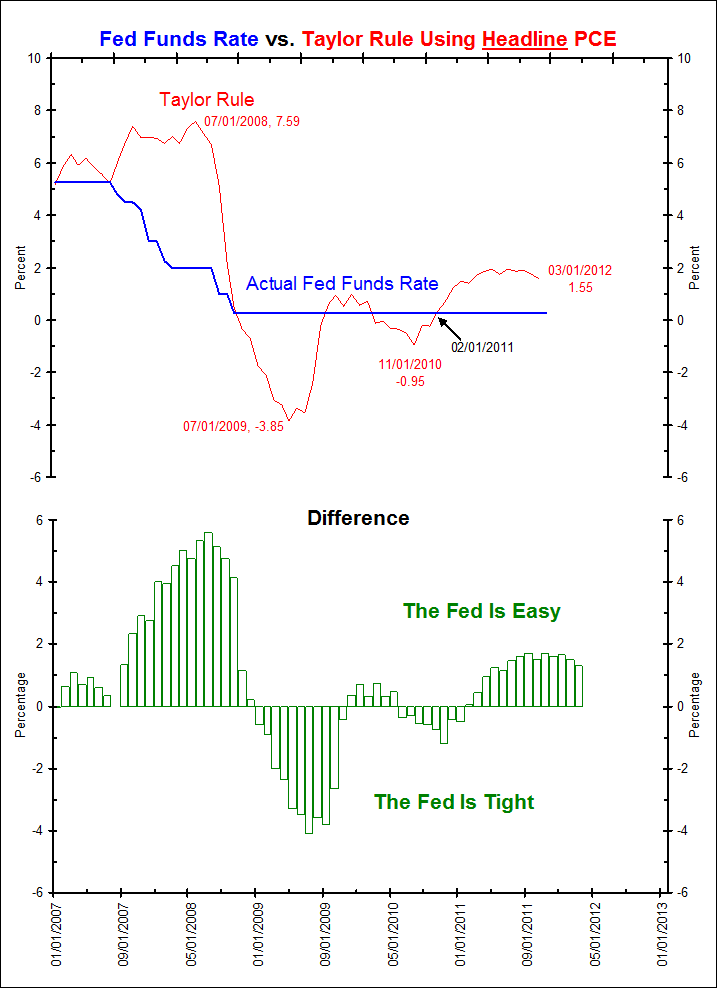
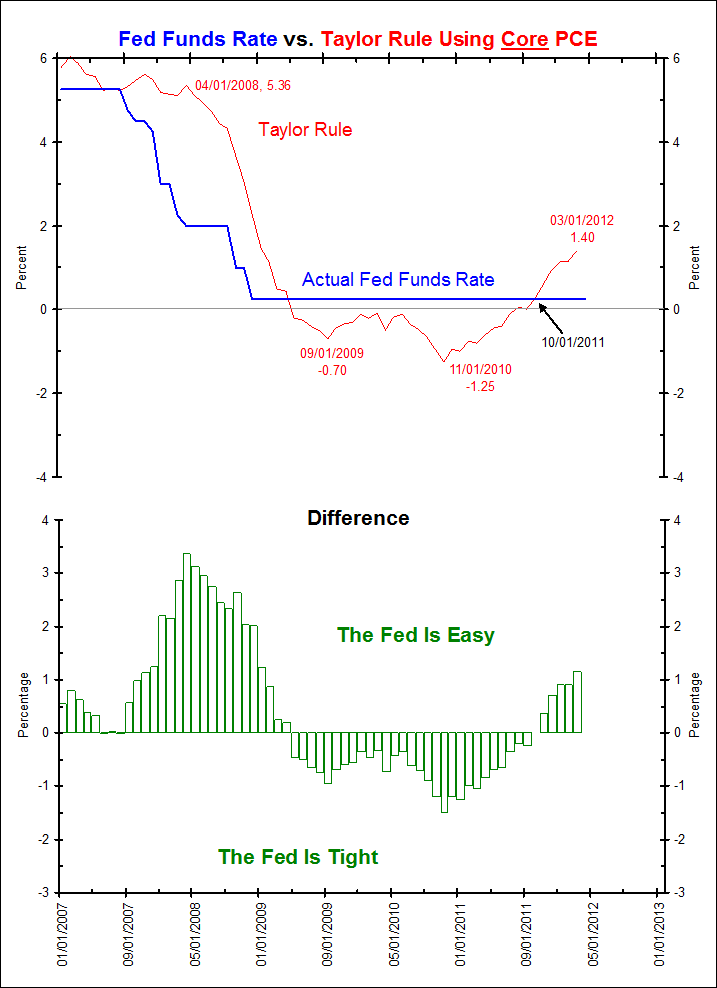
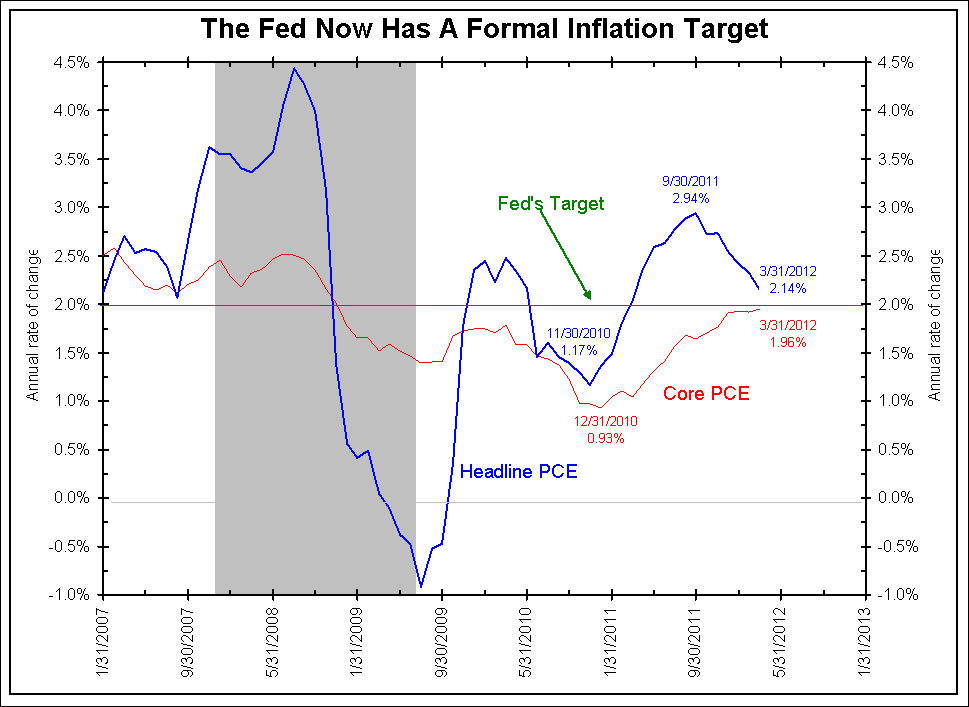

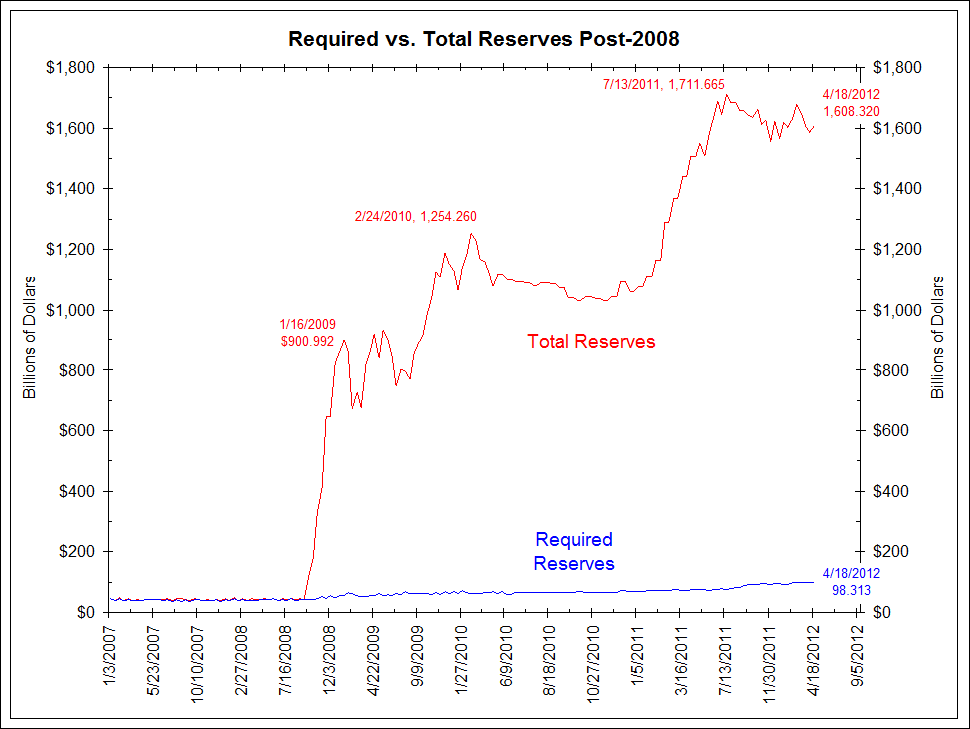
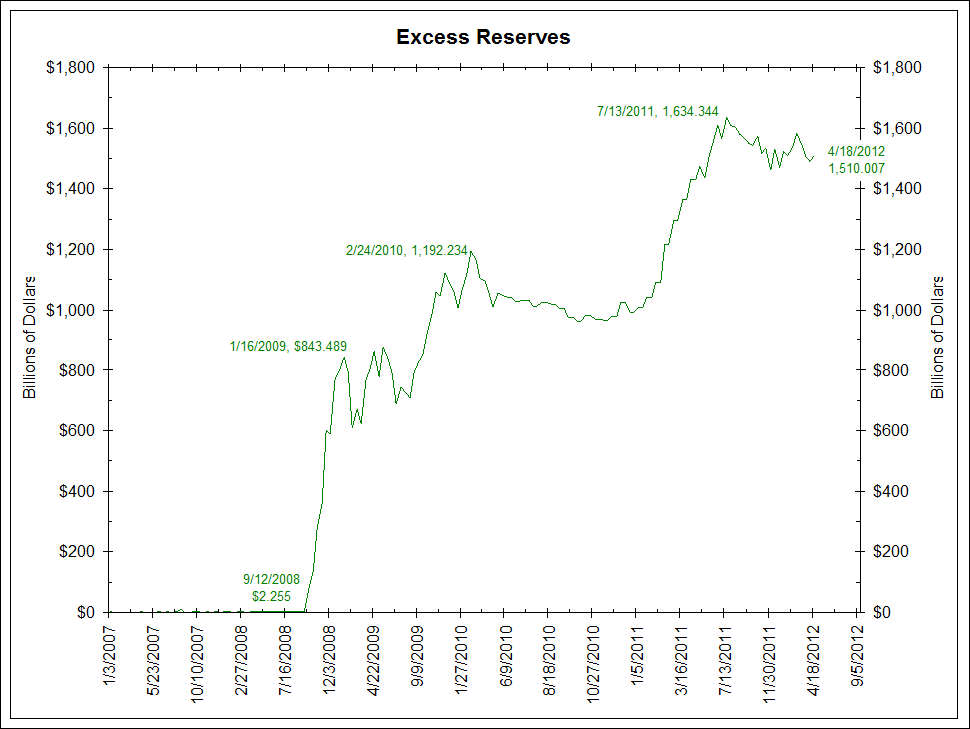



What's been said:
Discussions found on the web: